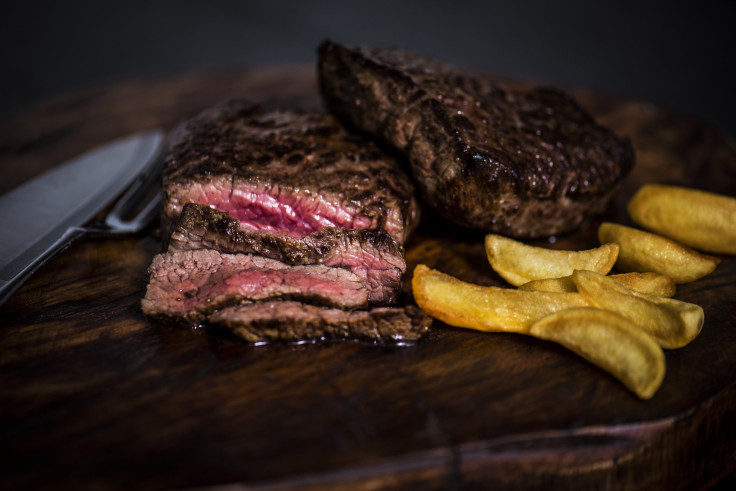SNAP Benefits May Cut Out Junk Food And Luxury Items In Effort To Limit Food Stamps To ‘Essentials’

Approximately 46 million Americans receive food stamps, known as the Supplemental Nutrition Assistance Program, and most of them are either children, elderly, or disabled. New York State Senator Patty Ritchie (R) has proposed new dietary restrictions on what these recipients can buy in an attempt to get junk food and luxury items out of their grocery baskets. However, opponents of the bill are skeptical that the bill’s restrictions will work.
“The goal of the Supplemental Nutrition Assistance Program is to help low-income consumers make wise and healthy food choices,” Senator Ritchie said in a statement on Thursday. “However in New York State, SNAP beneficiaries are able to use their taxpayer-funded cards to purchase things like soda, candy, cake and other types of junk food and luxury items.”
Although conservatives often complain about how the low-income population spends its food stamps, their liberal counterparts in the Obama administration recently announced a push to get food stamp recipients to buy healthier options as well. Earlier this month, it announced that certain groceries and bodegas that primarily serve consumers who pay with food stamps will be required to stock up with healthier options. The proposed rule is an effort to expand access to a healthier variety of dairy products, bread and cereals, meats, poultry, fish, fruits, and vegetables.
According to the U.S. Department of Agriculture (USDA), the program was originally designed to fight hunger and improve overall access to food for families and individuals in need. But under the current law, food stamps can be used to purchase “nonessential” items, including unhealthy foods like candy, cakes, and soda, and luxury items like steak and lobster. The program does bar recipients from purchasing alcoholic beverages, cigarettes, pet food, and hot or prepared food such as restaurant meals. Senator Ritchie argues that keeping food stamp recipients from purchasing unhealthy foods and luxury items will leave them more money for essentials like milk, juice, fruits, vegetables, granola bars, and peanut butter, reinforcing the system’s original intent.
“Many of these items aren’t just unhealthy, they’re also expensive,” Senator Ritchie said. “This legislation would not only help low-income families and individuals stretch their food budgets further and promote health and nutrition, it would also protect taxpayers from abuse of a program that’s intended to help those who have fallen on hard times.”
The Consequences of Limitation
There are several drawbacks to restricting food stamp recipients from purchasing the occasional steak or chips. Food stamp limitations may shame beneficiaries, who are already dealing with financial constraints. Meanwhile, junk food and luxury items are purchased on an infrequent basis due to the limitations from the budget itself. According to a Pew Research Center survey conducted in 2013, one in five Americans benefited from the program the previous year, and women were twice as likely as men to receive food stamps at some point in their lives. Women were also far more likely to spend their limited budget on their child or give up their meals in order to ensure they could feed their child.
In 2015, households approved for program benefits were granted an average $257.71 every month, while each individual received an average of $126.83. In an in-depth interview report in 2013, the USDA found that the money doesn’t stretch far for households and that many are forced to switch from eating meat to eating ramen noodles by the end of the month. Recipients by-and-large have been found to make wise purchases throughout the month with the occasional treat to share with their children, for example, so they don’t feel their financial constraints as fiercely.
“I’m not sure about how effective this would be,” Christopher Rediehs, social services commissioner for New York’s St. Lawrence County told Watertown Daily Times in an interview. “Would it really limit unwise purchases? Would steak or lobster still be unwise purchases if they were less [expensive] than hamburger?”
Just because food stamps won’t allow recipients to buy certain foods doesn’t force them to make healthier purchases or use their budget more wisely. They need the money to bring them to the end of the month, which is more likely to force them to conserve and plan ahead than to indulge.
The bill’s supporters claim it will improve the health and welfare of food stamp recipients. According to a USDA study that examined the socioeconomic breakdown of the program between the years 2007 and 2010, 40 percent of recipients were obese, higher than the national rate of 35 percent. When measuring their purchasing history, researchers found 55 percent of the program’s recipients surveyed said they had consumed a soda the previous day. Overall, their diets were slightly worse compared to those Americans who weren’t receiving food stamps.
Efforts that support healthy eating need to be weighed seriously when taking into account America’s obesity epidemic. But how would the limits be fairly regulated and where will the USDA ultimately draw the line between essential groceries and luxury items and junk food? Implementing and monitoring a new rule will require careful execution in order to avoid damaging the system by overdoing dietary restrictions.



























